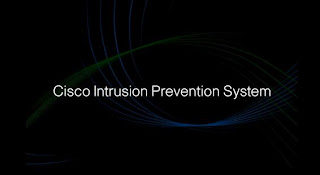This blog is created for network security review, study and understanding about network related issues only!
The blog is mainly focus on Network Security Notes about Network, Network Security, Network Technology, Network Labs review related Cisco and Microsoft technology ,Network Threats, Types of Network Threats, Network Alerts, Enterprise Security Policy and Audits, Security Policy and Audits,Logical Security, Physical and Logical Security, Physical Security,Cisco Products Review, Microsoft Products review, Cisco Routers, Routers Security, Console Access, Telnet Access, Network Attack, Network Attack report, Network management, Anti-virus, Network Security with Anti-virus, and All About Network Security... Thanks for your visit!
Network Security Notes: Understanding Route Filtering
What is Routing?
Routing or routering is the process of selecting paths in a network along which to send network traffic. Routing is performed for many kinds of networks, including the telephone network (Circuit switching) , electronic data networks (such as the Internet), and transportation networks. This article is concerned primarily with routing in electronic data networks using packet switching technology.
In packet switching networks, routing directs packet forwarding, the transit of logically addressed packets from their source toward their ultimate destination through intermediate nodes, typically hardware devices called routers, bridges, gateways, firewalls, or switches. General-purpose computers can also forward packets and perform routing, though they are not specialized hardware and may suffer from limited performance. The routing process usually directs forwarding on the basis of routing tables which maintain a record of the routes to various network destinations. Thus, constructing routing tables, which are held in the router's memory, is very important for efficient routing. Most routing algorithms use only one network path at a time, but multipath routing techniques enable the use of multiple alternative paths.
Routing, in a more narrow sense of the term, is often contrasted with bridging in its assumption that network addresses are structured and that similar addresses imply proximity within the network. Because structured addresses allow a single routing table entry to represent the route to a group of devices, structured addressing (routing, in the narrow sense) outperforms unstructured addressing (bridging) in large networks, and has become the dominant form of addressing on the Internet, though bridging is still widely used within localized environments.
What is Route filtering?In the context of network routing, route filtering is the process by which certain routes are not considered for inclusion in the local route database, or not advertised to one's neighbours. Route filtering is particularly important for BGP on the global Internet, where it is used for a variety of reasons.
What is BGP?The Border Gateway Protocol (BGP) is the protocol backing the core routing decisions on the Internet. It maintains a table of IP networks or 'prefixes' which designate network reachability among autonomous systems (AS). It is described as a path vector protocol. BGP does not use traditional Interior Gateway Protocol (IGP) metrics, but makes routing decisions based on path, network policies and/or rulesets. For this reason, it is more appropriately termed a reachability protocol rather than routing protocol.
BGP was created to replace the Exterior Gateway Protocol (EGP) protocol to allow fully decentralized routing in order to transition from the core ARPAnet model to a decentralized system that included the NSFNET backbone and its associated regional networks. This allowed the Internet to become a truly decentralized system. Since 1994, version four of the BGP has been in use on the Internet. All previous versions are now obsolete. The major enhancement in version 4 was support of Classless Inter-Domain Routing and use of route aggregation to decrease the size of routing tables. Since January 2006, version 4 is codified in RFC 4271, which went through more than 20 drafts based on the earlier RFC 1771 version 4. RFC 4271 version corrected a number of errors, clarified ambiguities and brought the RFC much closer to industry practices.
Most Internet service providers must use BGP to establish routing between one another (especially if they are multihomed). Therefore, even though most Internet users do not use it directly, BGP is one of the most important protocols of the Internet. Compare this with Signaling System 7 (SS7), which is the inter-provider core call setup protocol on the PSTN. Very large private IP networks use BGP internally. An example would be the joining of a number of large OSPF (Open Shortest Path First) networks where OSPF by itself would not scale to size. Another reason to use BGP is multihoming a network for better redundancy either to multiple access points of a single ISP (RFC 1998) or to multiple ISPs.
What is Internet?The Internet is a global system of interconnected computer networks that use the standard Internet Protocol Suite (TCP/IP) to serve billions of users worldwide. It is a network of networks that consists of millions of private, public, academic, business, and government networks, of local to global scope, that are linked by a broad array of electronic, wireless and optical networking technologies. The Internet can also be defined as a worldwide interconnection of computers and computer networks that facilitate the sharing or exchange of information among users. The Internet carries a vast range of information resources and services, such as the inter-linked hypertext documents of the World Wide Web (WWW) and the infrastructure to support electronic mail.
Most traditional communications media including telephone, music, film, and television are reshaped or redefined by the Internet, giving birth to new services such as Voice over Internet Protocol (VoIP) and IPTV. Newspaper, book and other print publishing are adapting to Web site technology, or are reshaped into blogging and web feeds. The Internet has enabled or accelerated new forms of human interactions through instant messaging, Internet forums, and social networking. Online shopping has boomed both for major retail outlets and small artisans and traders. Business-to-business and financial services on the Internet affect supply chains across entire industries.
The origins of the Internet reach back to research of the 1960s, commissioned by the United States government in collaboration with private commercial interests to build robust, fault-tolerant, and distributed computer networks. The funding of a new U.S. backbone by the National Science Foundation in the 1980s, as well as private funding for other commercial backbones, led to worldwide participation in the development of new networking technologies, and the merger of many networks. The commercialization of what was by the 1990s an international network resulted in its popularization and incorporation into virtually every aspect of modern human life. As of 2009, an estimated quarter of Earth's population used the services of the Internet.
The Internet has no centralized governance in either technological implementation or policies for access and usage; each constituent network sets its own standards. Only the overreaching definitions of the two principal name spaces in the Internet, the Internet Protocol address space and the Domain Name System, are directed by a maintainer organization, the Internet Corporation for Assigned Names and Numbers (ICANN). The technical underpinning and standardization of the core protocols (IPv4 and IPv6) is an activity of the Internet Engineering Task Force (IETF), a non-profit organization of loosely affiliated international participants that anyone may associate with by contributing technical expertise.
How many Types of filtering?There are two times when a filter can be naturally applied: when learning routes from a neighbour, and when announcing routes to a neighbour.
Input filteringIn input filtering, a filter is applied to routes as they are learned from a neighbour. A route that has been filtered out is discarded straight away, and hence not considered for inclusion into the local routing database.
Output filteringIn output filtering, a filter is applied to routes before they are announced to a neighbour. A route that has been filtered out is never learned by a neighbour, and hence not considered for inclusion in the remote route database.
Why Need Filtering?Reasons to filterEconomic reasonsWhen a site is multihomed, announcing non-local routes to a neighbour different from the one it was learned from amounts to advertising the willingness to serve for transit, which is undesirable unless suitable agreements are in place. Applying output filtering on these routes avoids this issue.
Security reasonsAn ISP will typically perform input filtering on routes learned from a customer to restrict them to the addresses actually assigned to that customer. Doing so makes address hijacking more difficult.
Similarly, an ISP will perform input filtering on routes learned from other ISPs to protect its customers from address hijacking.
Technical reasonsIn some cases, routers have insufficient amounts of main memory to hold the full global BGP table. A simple work-around is to perform input filtering, thus limiting the local route database to a subset of the global table. This can be done by filtering on prefix length (eliminating all routes for prefixes longer than a given value), on AS count, or on some combination of the two.
This practice is not recommended, as it can cause suboptimal routing or even communication failures with small networks, and frustrate the traffic-engineering efforts of one's peers.
Other sites you may want to see:Entertainment on Flixya:
http://visalittleboy.flixya.com/WWE:
http://visa-wwe.blogspot.com/The Kingdom of Wonder:
http://welcome2cambodia.blogspot.com/Daily Blogging:
http://visablogging.blogspot.com/Love Sharing:
http://visa-love.blogspot.com/Network Security:
http://networksecuritynotes.blogspot.com/About Insurance:
http://visa-insurance.blogspot.comAll about Love:
http://visa-love.blogspot.com/Learning English Online:
http://visa-elb.blogspot.com/Discovery Internet:
http://visa-isp.blogspot.com/
Read more...
If you like this post, please subscribe below,thanks!










 Cisco Intrusion Prevention System-Cisco IPS
Cisco Intrusion Prevention System-Cisco IPS 
